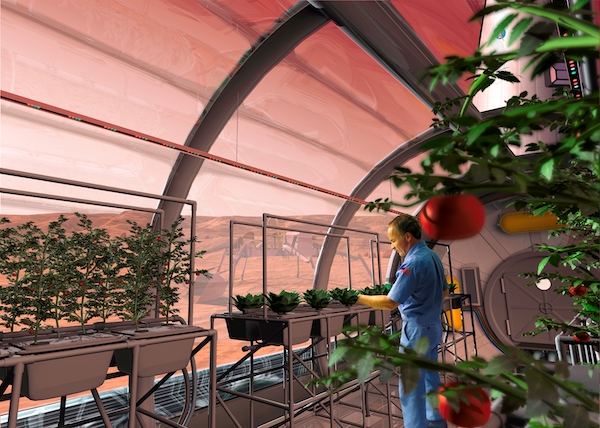Somewhat surprisingly, NASA has played a big role in the development of many new food technologies that have emerged. Any long-term space mission that the agency hopes to conduct needs a way of producing food as transporting enough packaged food to sustain astronauts just isn’t practical. And obviously, food production will be a necessary capability if humans are going to set up outposts on the Moon or Mars.
In a recent round of NASA funding awards, Montana State University, Bozeman was among those that secured a spot aboard the International Space Station to demonstrate an in-space bioreactor system for growing bio-based protein. It’s similar to technology already being used by several agtech startups to produce high-protein medium for meat and dairy alternatives here on Earth. The technology was initially developed via a NASA supported collaboration. But NASA’s hand in growing high-protein medium goes back even further to the 1960s when the agency first experimented with the idea. The technologies that companies are developing today all stem from that initial NASA research.
Another area where NASA has played a big role is indoor farming. Researchers say growing plants is not just important for providing food but also for the astronauts’ mental health. NASA’s first major initiatives toward that goal began in the 1980s with its Controlled Ecological Life Support Systems (CELSS) Program. Conducted mainly during the 1980s and 1990s with dozens of universities, the research focused on growing crops in controlled environments. NASA’s funding yielded discoveries like the University of Wisconsin’s use of different LED light colors to optimize plant growth. Today’s modern greenhouses are often bathed in purple light because of that breakthrough.
The lighting was one part of what NASA called a “salad machine” system that could be used to produce fresh foods in space. CELSS projects also included new watering concepts, such as the use of porous membranes or tubes for watering plants. This was part of what may have been the earliest “vertical farming” concepts that experimented with growing different crops under different conditions, including hydroponics and various solid growing mediums. In the past decade, these technologies have evolved into a booming vertical farming industry that has produced multiple billion-dollar companies.
NASA research into these areas continues today but the agency has also increased its focus on automating the labor side of food production. Working in collaboration with the German Aerospace Center (DLR)in Antartica, NASA is trying to figure out how to reduce the needed manpower. Daniel Schubert, the project coordinator of the Antarctica experiment, says having an artificial intelligence system to take care of the greenhouse is the ideal goal. In the meantime, researchers are working to identify the biggest time sucks.
One area they’ve already identified is the design of vertical farming systems themselves, which NASA researcher Jess Buncheck says currently takes too long to repair. So now they are looking at how to scale down the technology to make future systems simpler and easier to operate in the confined spaces. Another team of researchers from the University of Florida Space Plants Lab are working on more sophisticated plant monitoring systems. They use artificial intelligence to identify plant stress, which is measured by the colors of light it is absorbing and reflecting. The scientists say their system can identify salt stress in just fifteen minutes, and drought stress within an hour. As with NASA’s previous work, we can probably expect advances on these fronts and more to make their way into systems here on Earth. (Sources: NASA, Open Agriculture, CNBC)








